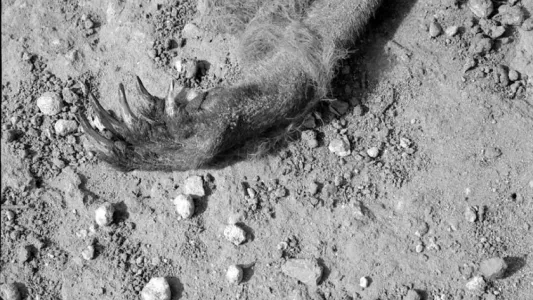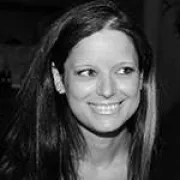Ever since its invention back in the 18th century, photography has been documenting life. At the same time, it focuses on inviting audiences to a rather subjective world while trying to be taken seriously as an art form. Photography has always been considered a male dominated profession, but luckily things are changing. Scholars, writers, bloggers, photography students and enthusiasts have been giving due to the female pioneers of the field. Most of them were always standing and/or hiding in the shadows, oblivious to how much they could acclaim and accomplish. Arguably, the technique, concepts and themes female photographers use, differ from those of male photographers. When most women were convinced that their place was in the kitchen and certainly not in the dark room, there were those who were struggling to surpass their male counterparts and work towards gaining respect and recognition for their work.
A photograph is a subjective impression. It is what the photographer sees. No matter how hard we try to get into the skin, into the feeling of the subject or situation, however much we empathize, it is still what we see that comes out in the images, it is our reaction to the subject and in the end, the whole corpus of our work becomes a portrait of ourselves.
Marilyn Silverstone (British photographer, 1929-1999) wasn’t just a well-respected photojournalist, but also an ordained Buddhist nun. Born in London, Silverstone graduated from Wellesley College in Massachusetts and then worked as an associate editor for Art News, Industrial Design and Interiors during the 1950’s. She then moved to Italy to make documentary art films. Her first experience with photography was back in 1955, when she began to photograph professionally as a freelancer with the Nancy Palmer Agency. In 1959, she was sent on a three-month assignment to India, but ended up moving to New Delhi and was based there until 1973. During that time she produced four books. Silverstone became an associate member of Magnum in 1964, a full member in 1967 – one of five women members – and a contributor in 1975. Her work was featured in magazines such as Newsweek, LIFE, Look, Vogue and National Geographic, but Silverstone chose to leave all that behind and become a nun. She died in October 1999, at the Shechen monastery, near Kathmandu, which she had helped to finance.
© Ursula Arnold
Ursula Arnold (German photographer, 1929-2012) was mostly known for her street photography in Berlin and Leipzig produced during the German Democratic Republic years. Born in East Germany, Arnold was described as “one of those artists who could not easily be integrated”. Her father was a self-employed photographer and after finishing high school in 1948, Ursula wanted to follow in his footsteps. She moved to a nearby town, where she learned her craft in a studio-workshop. In 1955 she received her photography degree from the Fine Arts Academy in Leipzig, although she wasn’t really happy there. At the academy the onset of the “formalism debate” during the early 1950’s constrained the freedom of the teachers to discuss or depart from a curriculum which was uncompromisingly based on government strictures and official beliefs concerning “socialist imagery”. These issues made it harder for Arnold to launch her career as a female freelance photographer. Together with other photographers and fellow students, she set up a student mutual support group called action fotografie. In a country which set great store by the visual arts, many of those involved in the group would go on to become some of East Germany’s top photographers.
In 1957 Arnold moved to East Berlin and took a job as a camera operator to support herself and her young son. In 1985 she turned to landscape photography and produced a few notable photo collections. Arnold is considered one of the most important East German photographers of her generation and her work was decisively influenced by her critical evaluation of the reality of the German Democratic Republic, where photography was often used as a means of political education.

Joyce Evans (Australian photographer, 1929-2019) knew how to multitask, but it was her work as a documentary photographer which finally made her known. She was a photographer of influence and outstanding merit. Her major areas of interest included the edge of the road, road kills and fatalities, the land and many other bodies of focused photo essays. She was active as an amateur from the 1950’s and professional photographic artist from the 1980’s, director of the Church Street Photography Centre in Melbourne (1976–1982), art curator, collector and tertiary photography lecturer. She studied painting, but discovered photography and started a career first as a gallerist and then as a practicing photographer. Her landscape photography is a testimony to how she aspired to capture the essence of a place. Her portraiture is a testimony to how she desired to get close to her subject – both with her lens and otherwise. She would emphasize on the psychological connection between the people and their space. Passionately dedicated to photography, she has had many solo exhibitions of both her landscapes and her portraits throughout Australia and Europe. Evans plays an important educational role in Australian photography and she is an approved valuer for Australian and International Photography from in the 19th century to present day for the Australian Government’s Cultural Gifts Program. She is a published photographer and her work has been exhibited in many galleries around the world.
We will continue talking about female names that left their mark in photography and about contemporary female photographers who are still to emerge. There are a lot of female photographers out there deserving of praise and we can only hope to cover as many of them as we can. Please, follow this space to find out more.

If I ask myself if there’s a different reality for me [as a woman rather than as a man], then the answer is [one to a different question]: not to belong to the rulers. My sympathies belong to those who are not part of the ruling establishment.








